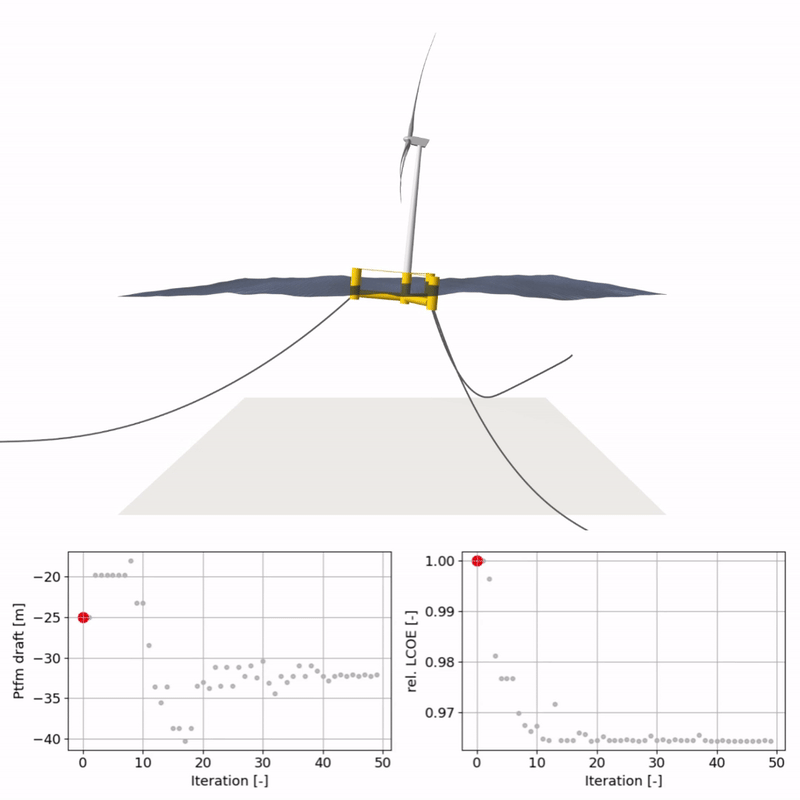
Great news from the FLOATFARM project! Our colleague Robert Behrens de Luna has successfully completed the first fully functional integration of QBlade with National Renewable Energy Laboratory’s open-source optimization frameworks 𝐖𝐄𝐈𝐒 and 𝐖𝐈𝐒𝐃𝐄𝐌.
𝐇𝐞𝐫𝐞’𝐬 𝐚 𝐬𝐧𝐞𝐚𝐤 𝐩𝐞𝐞𝐤 𝐚𝐭 𝐭𝐡𝐞 𝐜𝐨𝐮𝐩𝐥𝐢𝐧𝐠:
🔺QBlade now connects seamlessly with all tools in the WEIS framework, including pyHams, the ROSCO toolbox, and TurbSim. The workflow is aligned with Level 3 time-domain optimizations. The QBlade-to-WEIS interface will be available on GitHub by the end of the year.
🔺Offshore wind turbine models (both floating and fixed-bottom), along with the structural data tables required for QBlade’s non-linear multi-body formulation, are derived directly from windIO input files.
🔺All objective functions supported in WEIS/WISDEM, such as LCOE, tower base and blade root DELs, structural masses, and power coefficient, are fully available.
The example animation shows an optimization result on the VolturnUS floating substructure. This co-design optimization minimizes LCOE by varying the floater geometry and tuning the controller parameters of the IEA 22MW turbine. 📈
Stay tuned for more updates!
hashtag#WindEnergy hashtag#QBlade hashtag#Optimization hashtag#openMDAO hashtag#FloatingWind hashtag#OpenSource

